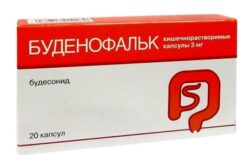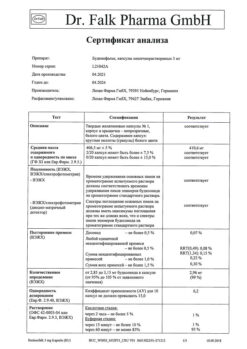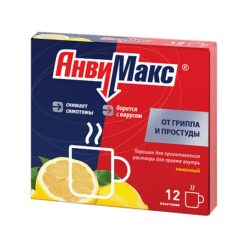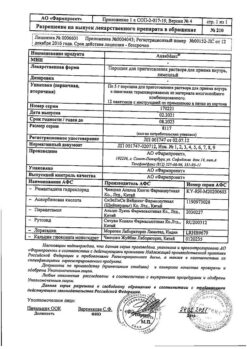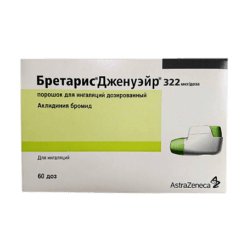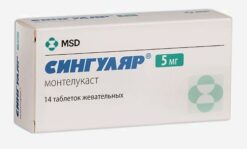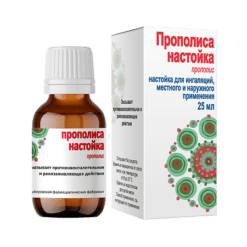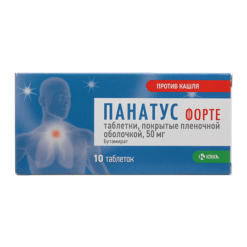No products in the cart.
Ectalust 5 mg, 14 pcs.
€1.00
Out of stock
(E-mail when Stock is available)
Description
Ectalust is a leukotriene receptor antagonist. Montelukast selectively inhibits CysLT1-receptors of cysteinyl leukotrienes (LTC4, LTD4, LTE4) of airway epithelium and also prevents bronchospasm in patients with bronchial asthma caused by inhalation of cysteinyl leukotriene LTD4. A dose of 5 mg is sufficient to stop LTD4-induced bronchospasm. The use of montelukast in doses exceeding 10 mg once daily does not increase the effectiveness of the drug.
Montelukast causes bronchodilation within 2 hours after oral administration and may complement bronchodilation induced by beta2-adrenomimetics.
Pharmacokinetics
Montelukast is rapidly and almost completely absorbed from the GI tract after oral administration. In adults, when administered in a dose of 5-10 mg, Cmax in plasma is reached after 2-3 hours. Bioavailability in oral administration is 64-73%.
The binding of montelukast to plasma proteins is more than 99%. Vd on average is 8-11 liters.
When administered in a single dose of 10 mg once daily, there is a moderate (about 14%) cumulation of the active substance in plasma.
Montelukast is actively metabolized in the liver. When used in therapeutic doses, plasma concentrations of metabolites of montelukast in equilibrium in adults and children are not determined.
The CYP3A4 and CYP2C9 isoenzymes are thought to be involved in the metabolism of montelukast, and at therapeutic concentrations montelukast does not inhibit the CYP3A4, 2C9, 1A2, 2A6, 2C19 and 2D6 isoenzymes.
The T1/2 of montelukast in young healthy adults is 2.7 to 5.5 h. The clearance of montelukast in healthy adults averages 45 ml/min. After oral administration, 86% of montelukast is excreted with feces within 5 days and less than 0.2% with urine, confirming that montelukast and its metabolites are excreted almost exclusively with bile.
The pharmacokinetics of montelukast remain nearly linear when administered orally at doses greater than 50 mg.
Indications
Indications
Active ingredient
Active ingredient
Composition
Composition
1 tablet contains:
Active substance:
Montelukast 5 mg.
Associates:
dextrates,
mannitol,
prosolv (microcrystalline cellulose 98%, colloidal silicon dioxide 2%),
Strawberry flavoring,
aspartame,
Magnesium stearate.
How to take, the dosage
How to take, the dosage
Ingestion, once a day, regardless of meals. For treatment of bronchial asthma the drug should be taken in the evening. In the treatment of allergic rhinitis the drug can be taken at any time of the day if the patient wishes.
Adults and children from 15 years: 1 tablet (10 mg)/day.
General recommendations
The therapeutic effect of Ectalus on symptoms reflective of bronchial asthma is seen within the first day. The patient should continue taking Ectalust both during the controlled course of bronchial asthma and during exacerbation of the disease. For elderly patients, patients with renal insufficiency, patients with mild or moderate hepatic impairment, no dose adjustment is required. The dose of the drug is the same for female and male patients.
Prescribing Ectalust concomitantly with other asthma treatments
Ectalust can be added to patient treatment with bronchodilators and inhaled GCS.
Interaction
Interaction
Ectalust may be administered together with other drugs traditionally used for the prevention and long-term treatment of bronchial asthma. The recommended clinical dose of Montelukast had no clinically significant effect on the pharmacokinetics of the following drugs: theophylline, yrednisone, prednisolop, oral contraceptives (ethinylestradiol/norethindrone 35/1), terfenadine, digoxin and warfarin.
The AUC is decreased in persons concomitantly receiving phenobarbital (by about 40%). However, correction of the dosage regimen of Ectalust in such patients is not required.
Because Montelukast is metabolized by CYP3A4 isoenzyme, caution must be exercised, especially in children, when concomitant administration of Montelukast with drugs that induce CYP3A4 isoenzyme, such as phenytoin, phenobarbital and rifampicin.
In in vitro studies, montelukast has been shown to be a potential inhibitor of the CYP2C8 isoenzyme. however, data from clinical drug-drug interaction studies involving montelukast and rosiglitazone (a preliminary substrate representative of medical drugs primarily metabolized by CYP2C8 isoenzymes) showed that montelukast doses did not inhibit CYP2C8 isoenzyme in vivo. Consequently, montelukast has no appreciable effect on the metabolism of drugs metabolized by this enzyme (e.g., paclitaxel, rosiglitazone and repaglinide).
In high doses of montelukast (at 20- and 60-fold the recommended dose for adults) a decrease in plasma theophylline concentration is observed. This effect is not observed when taking the drug in the recommended doses of 10 mg/day.
Bronchodilators: Ectalust may be added to the treatment of patients whose asthma is not controlled with bronchodilators alone. When a therapeutic effect is achieved (usually after the first dose) with Ectalust therapy, the dose of bronchodilators may be gradually reduced.
Inhaled GCS: treatment with Ectalust provides additional therapeutic effect in patients treated with inhaled GCS. When the patient’s condition is stabilized, the dose of GCS may be reduced. The dose of GCS should be reduced gradually, under medical supervision. In some patients, inhaled GCS may be completely discontinued. Abrupt substitution of inhaled GCS therapy with Ectalust is not recommended.
Special Instructions
Special Instructions
The efficacy of Ectalust for oral administration in the treatment of acute attacks of bronchial asthma has not been established, therefore, the drug Ectalust in tablets is not recommended for the treatment of acute attacks of bronchial asthma. Ectalust should not replace inhaled or oral GCS.
There are no data indicating the possibility of reducing the dose of oral GCS with concomitant use of Ectalust. In rare cases, patients taking drugs to treat bronchial asthma, including Ectalust, may have systemic eosinophilia, sometimes accompanied by clinical manifestations of vasculitis and Churg-Strauss syndrome. This condition is usually treated with systemic GCS. Such cases are usually, but not always, associated with dose reduction or withdrawal of oral GCS. The possibility that taking leukotriene receptor antagonists may be associated with Churg-Strauss syndrome cannot be excluded or confirmed. Physicians should be aware of the possibility of eosinophilia, vasculitic rash, increased pulmonary symptoms, cardiac complications, and/or neuropathy in patients. Patients who develop the above symptoms should be reevaluated, and their treatment regimen should be reviewed.
The drug is not used to control bronchial asthma attacks as an emergency drug, but it should not be discontinued during exacerbations.
Patients with confirmed allergies to acetylsalicylic acid and other NSAIDs should not take these medications during treatment with Ectalust, because while it improves respiratory function in patients with allergic bronchial asthma, it cannot completely prevent NSAID-induced bronchoistriction.
Patients with phenylketonuria should be informed that 1 4 mg chewable tablet contains an average of 0.8 mg aspartame and 1 5 mg chewable tablet contains an average of 1 mg aspartame.
Influence on ability to drive vehicles and perform other potentially dangerous activities
There are no data showing that taking Ectalust influences the ability to drive or operate moving mechanisms. However, there are side effects when using the drug, such as dizziness and somnolence. In this regard, caution should be exercised when driving motor transport and working which requires quick psychomotor reactions.
Contraindications
Contraindications
Hypersensitivity to any of the ingredients of the drug Ectalust; children under 15 years of age.
Side effects
Side effects
In general, Ectalust is well tolerated. Side effects are usually mild and usually do not require treatment withdrawal. The overall incidence of side effects reported with Montelukast is comparable to that of placebo:.
Blood and lymphatic system disorders: increased tendency to bleed.
Immune system disorders: hypersensitivity reactions, including anaphylaxis, eosinophilic infiltration of the liver (very rare – 0.01%).
Mental disorders: agitation, including aggressive behavior or hostility, anxiety, depression, disorientation, pathological dreams, hallucinations, insomnia, irritability, restlessness, somnambulism, suicidal thoughts and behavior (suicide). tremor.
Nervous system disorders: headache, dizziness, somnolence, paresthesia/hypesthesia, hyperkinesia, seizures (very rarely –
Cardiac disorders: palpitations.
Respiratory system, chest and mediastinum disorders: nasal bleeding, upper respiratory tract infections, pharyngitis, cough, sinusitis, rhinorrhea.
Hearing and labyrinth disorders: otitis media (including middle).
Gastrointestinal disorders: diarrhea, dyspepsia, nausea, vomiting, pancreatitis, abdominal pain, dry mouth.
Hepatic and biliary tract disorders: increased activity of hepatic transaminases in blood ALT, ACT, hepatitis (including cholestatic, hepatocellular and mixed liver lesions) (very rare –
Skin and subcutaneous tissue disorders: Angioneurotic edema, tendency to form hematomas, erythema nodosa, erythema multiforme, itching, rashes, urticaria.
Muscular and connective tissue disorders: arthralgia, myalgia including muscle spasms.
General disorders and disorders at the site of administration: asthenia (weakness)/fatigue, edema, pyrexia, thirst. In rare cases, the development of Charge-Strauss syndrome has been noted in patients with bronchial asthma.
Overdose
Overdose
Symptoms: There have been no reports of overdose symptoms in patients with bronchial asthma at a dose greater than 200 mg/day for 22 weeks and at a dose of 900 mg/day for 1 week.
There have been reports of acute overdose of montelukast in children (taking at least 150 mg of the drug daily). The most common adverse events were a feeling of thirst, somnolence, mydriasis, hyperkinesias, and abdominal pain.
Treatment: symptomatic. There is no information on the specific treatment of overdose with Ectalust.
There are no data on the possibility of excretion of Montelukast by peritoneal dialysis or hemodialysis.
Pregnancy use
Pregnancy use
Ectalust should be used in pregnancy and during breastfeeding only if the expected benefit to the mother exceeds the potential risk to the fetus or baby.
Similarities
Similarities
Additional information
| Shelf life | 2 years |
|---|---|
| Conditions of storage | The drug should be stored in a dry place, protected from light and out of reach of children at a temperature not exceeding 25 ° C. |
| Manufacturer | Kanonfarma Production ZAO, Russia |
| Medication form | lozenges |
| Brand | Kanonfarma Production ZAO |
Related products
Buy Ectalust 5 mg, 14 pcs. with delivery to USA, UK, Europe and over 120 other countries.


